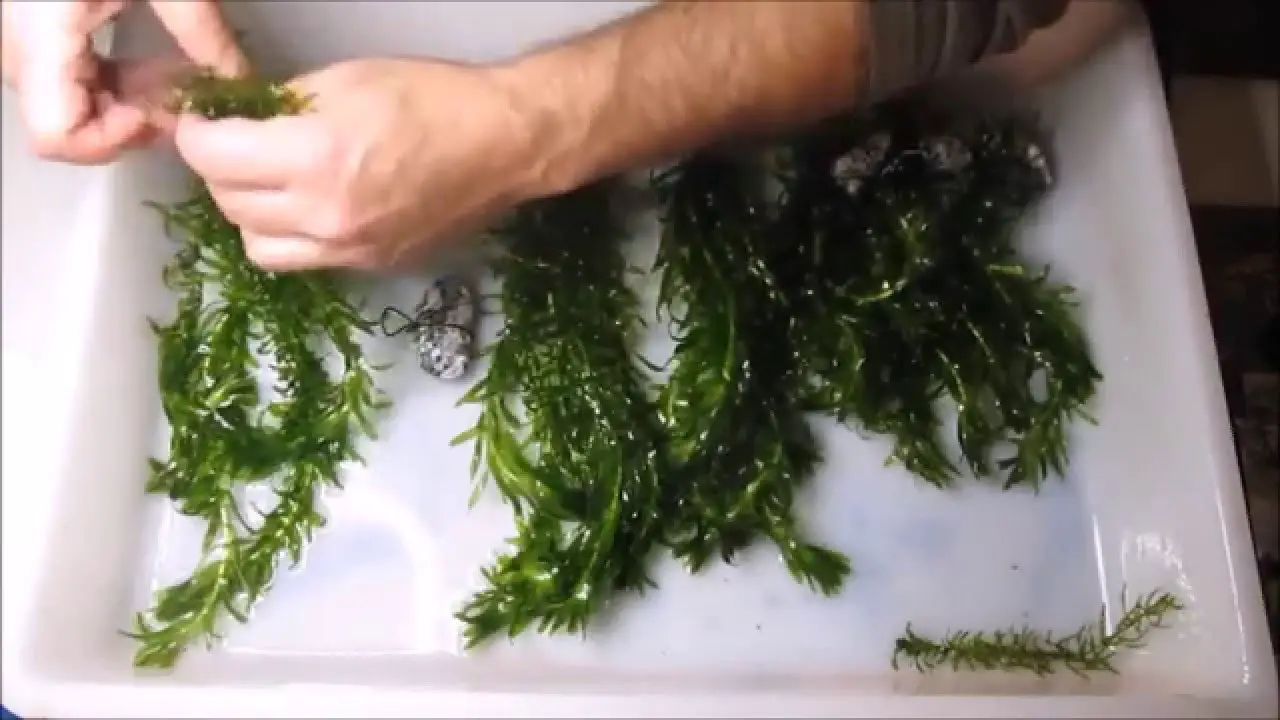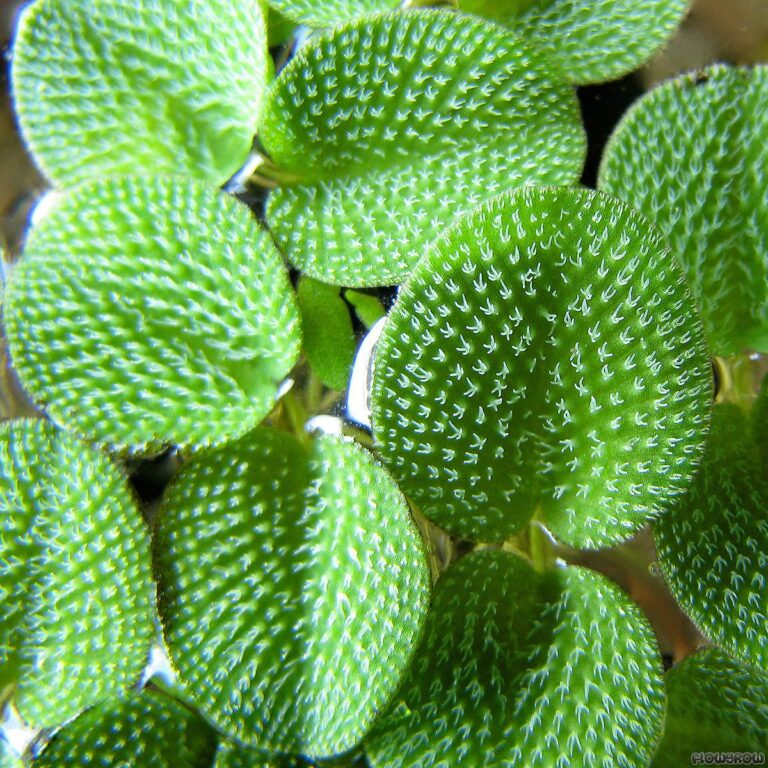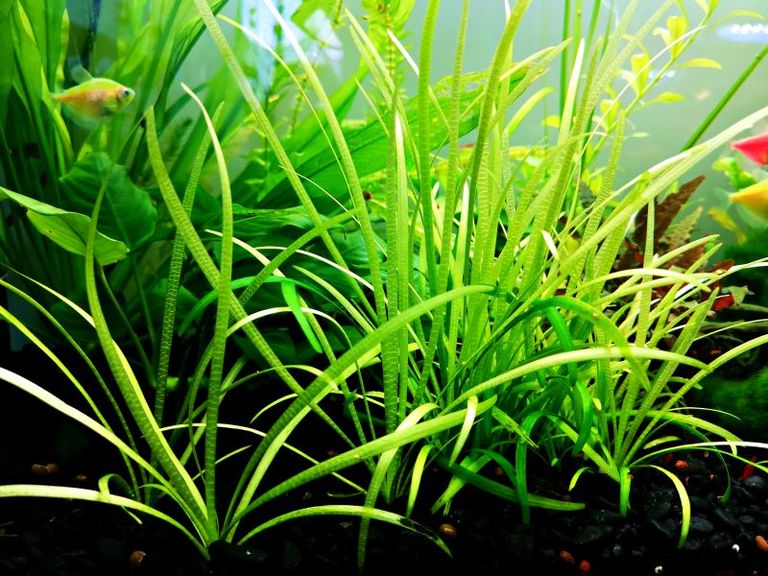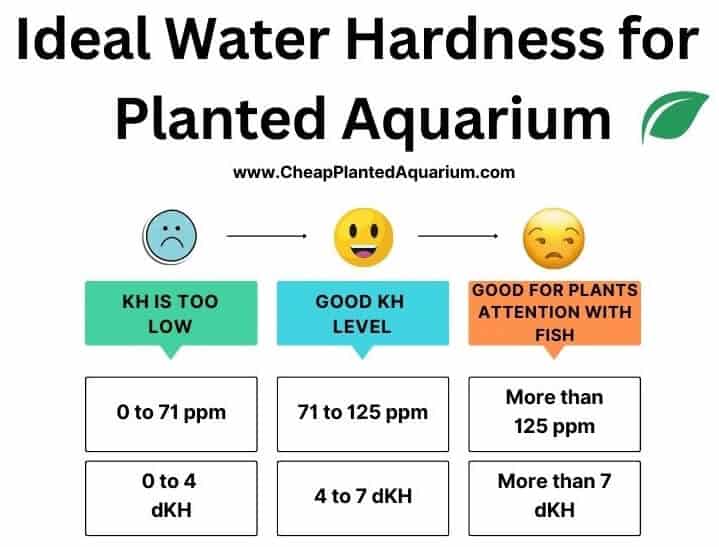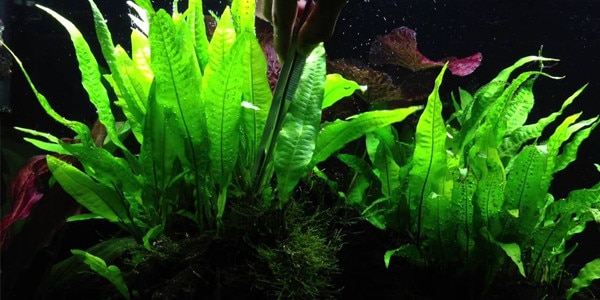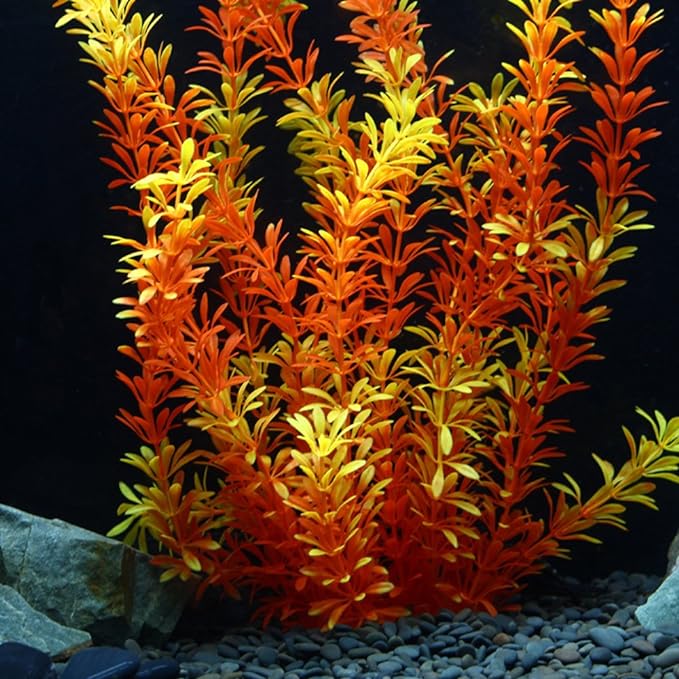Diy Aquarium Plant Weights: Easy Solutions for Stable Plants
DIY aquarium plant weights help keep plants anchored in place. They can be made using safe, non-toxic materials.
Aquarium plant weights are essential for maintaining a well-organized and visually appealing underwater environment. Plants floating around can disrupt the aesthetic and may even harm fish. Creating your own plant weights is a simple and cost-effective solution. Common materials include stainless steel, ceramic, and non-toxic lead alternatives.
Ensure the materials used do not affect water quality or harm the aquatic life. Properly weighted plants stay rooted, promoting healthier growth and a more natural look. By making your own, you can customize the weights to suit different plant types and tank setups. Keep your aquarium beautiful and balanced with DIY plant weights.

Credit: spec-tanks.com
Introduction To Diy Aquarium Plant Weights
Keeping aquarium plants in place can be tricky. Store-bought plant weights can be expensive and hard to find. Making your own DIY aquarium plant weights is a simple, cost-effective solution. This guide will teach you how to create plant weights at home.
Why Plant Weights Matter
Plant weights keep your aquarium plants from floating. Floating plants can disrupt your tank’s balance. They may also block light from reaching other plants.
- Stable plants improve tank aesthetics.
- Properly placed plants provide better hiding spots for fish.
- Weighted plants ensure even nutrient distribution.
Benefits Of Diy Solutions
DIY plant weights are easy to make. They are also cost-effective. You can use materials you already have at home.
| DIY Benefits | Store-Bought |
|---|---|
| Cost-effective | Expensive |
| Customizable | Limited options |
| Eco-friendly | Plastic waste |
Using DIY plant weights is also more sustainable. You can reuse old materials and reduce waste.
Choosing The Right Materials
Creating your own DIY aquarium plant weights can be a fun and rewarding project. It’s important to choose the right materials to keep your plants anchored and your fish safe. Using safe and non-toxic materials ensures a healthy environment for your aquatic friends.
Safe Materials For Aquariums
Choosing safe materials is crucial for the well-being of your aquarium. Here are some safe options:
- Stainless Steel: It doesn’t rust or leach harmful chemicals.
- Ceramic: These are heavy and stable, making them perfect plant weights.
- Natural Stones: Ensure they are clean and free from sharp edges.
These materials are durable and will not harm your fish or plants. You can find them easily at your local hardware store or online.
Avoiding Harmful Substances
It is crucial to avoid materials that can harm your aquarium. Steer clear of the following:
- Lead: It is toxic to fish and other aquatic life.
- Plastic: Some plastics can release harmful chemicals into the water.
- Metal with Coating: Coatings can chip off and contaminate the water.
Using these harmful substances can put your fish at risk and damage your aquarium ecosystem. Always verify materials before using them in your aquarium.
Simple Stone Weights
Using stones as weights for aquarium plants is easy and effective. They are natural and blend well with the tank environment. Let’s dive into the steps to create simple stone weights for your aquarium plants.
Selecting Suitable Stones
Choose stones that are smooth and free of sharp edges. Sharp stones can harm your fish or plants. Make sure the stones are not too large or heavy. They should be just enough to hold the plants down. Avoid stones with holes or crevices which can trap fish.
- Smooth surface
- Small to medium size
- No sharp edges
Attaching Stones To Plants
To attach stones to plants, use a fishing line or thread. Wrap the line around the stone and the plant base. Ensure it is secure but not too tight. You do not want to damage the plant stem. You can also use rubber bands for an easier option.
- Wrap the line around the stone.
- Secure it around the plant base.
- Check that it is not too tight.
Here is a quick comparison table for attachment methods:
| Method | Pros | Cons |
|---|---|---|
| Fishing Line | Strong, Durable | Harder to adjust |
| Thread | Easy to use | May degrade over time |
| Rubber Bands | Quick, Adjustable | May snap over time |
Using Metal Weights
Using metal weights is an effective way to keep your aquarium plants in place. Metal weights are durable and easy to use, making them a popular choice among aquarium enthusiasts. This section will guide you through the types of metal to use and how to secure metal weights to your plants.
Types Of Metal To Use
Different types of metal can be used as weights for your plants. Here are some options:
| Metal Type | Advantages |
|---|---|
| Stainless Steel | Rust-resistant, safe for fish |
| Lead | Very heavy, easy to shape |
| Brass | Durable, aesthetically pleasing |
Stainless steel is a great choice because it does not rust. This ensures the safety of your fish and plants. Lead is very heavy and easy to mold, but it must be coated to prevent poisoning. Brass looks nice and lasts long, though it can be expensive.
Securing Metal Weights
Once you’ve chosen your metal, it’s time to secure it to your plants. Follow these steps:
- Cut the metal into small pieces.
- Wrap the metal around the plant’s base.
- Ensure the weight is snug but not too tight.
- Place the plant in the desired location in your tank.
For added security, you can use a small piece of fishing line to tie the weight to the plant. This ensures the weight stays attached, even if the plant moves.
- Ensure the metal is aquarium-safe to avoid harming your fish.
- Regularly check the weights for signs of wear or rust.
- Replace any weights that show damage.
Using metal weights keeps your plants grounded and your aquarium looking neat. Choose the right metal and secure it properly for the best results.
Creative Use Of Clay
Clay can be a fantastic material for creating DIY aquarium plant weights. It is easy to mold, inexpensive, and safe for aquatic life. By using clay, you can create custom weights that blend seamlessly into your aquarium’s environment.
Preparing The Clay
To start, you’ll need some natural clay. Ensure the clay is non-toxic and aquarium-safe. You can find suitable clay at most craft stores or online. Here’s how to prepare it:
- Remove the clay from its packaging.
- Knead the clay thoroughly to remove any air bubbles.
- Make sure the clay is soft and pliable.
This process ensures the clay is ready for molding. It should be easy to shape and hold its form.
Molding Clay Weights
Now that the clay is prepared, it’s time to mold it into weights. Follow these steps:
- Take a small piece of clay, about the size of a marble.
- Roll the clay into a ball using your hands.
- Flatten the ball into a disc shape.
- Make a small hole in the center of the disc.
The hole will allow you to attach the weight to the plant. Ensure the hole is large enough for the plant stem. You can create various shapes and sizes depending on your needs. Let your creativity guide you!
After molding, bake the clay weights as per the clay’s instructions. This will harden the clay, making it durable and long-lasting. Once cooled, your DIY plant weights are ready to use in your aquarium.
| Step | Action |
|---|---|
| 1 | Prepare and knead the clay. |
| 2 | Roll into ball and flatten. |
| 3 | Punch a hole in the center. |
| 4 | Bake and cool. |
Using clay for DIY aquarium plant weights is both fun and practical. It allows you to create customized, natural-looking weights for your aquatic plants.

Credit: www.youtube.com
Recycling Household Items
DIY aquarium plant weights can be made from recycled household items. This approach is both cost-effective and environmentally friendly. You can use items like bottle caps and old jewelry to create these weights.
Reusing Bottle Caps
Bottle caps are perfect for making plant weights. They are small, durable, and easy to handle. Follow these simple steps to reuse bottle caps:
- Gather a few metal or plastic bottle caps.
- Clean the caps thoroughly with soap and water.
- Drill a small hole in the center of each cap.
- Thread a piece of fishing line through the hole.
- Attach the line to the plant base and secure it.
Using bottle caps ensures your plants stay in place. They are heavy enough to anchor the plants without damaging them.
Utilizing Old Jewelry
Old jewelry can also be transformed into plant weights. This method is creative and repurposes items you no longer wear. Here’s how to do it:
- Find old necklaces, bracelets, or metal charms.
- Remove any stones or beads that could detach.
- Clean the jewelry pieces with soap and water.
- Attach the jewelry to the plant using fishing line or thread.
Jewelry pieces add a unique touch to your aquarium. They also provide enough weight to keep your plants anchored.
Both methods are simple and effective. Recycling household items for plant weights is a great way to save money and reduce waste.
Installation Tips And Tricks
Installing DIY aquarium plant weights can be simple with a few tips. These tricks help you keep your plants stable and look great. Let’s dive into some helpful techniques.
Planting Techniques
Proper planting techniques are key to a thriving aquarium.
- Choose the Right Plants: Pick plants that are easy to grow.
- Clean the Roots: Rinse plant roots to remove dirt.
- Trim Dead Leaves: Cut off any dead or yellow leaves.
- Use Substrate: Bury plant roots in the aquarium substrate.
- Secure with Weights: Attach plant weights to hold them in place.
Ensuring Stability
Stability is crucial for healthy aquarium plants. Here are some tips:
- Position Weights Correctly: Place weights near the root base.
- Distribute Evenly: Spread weights evenly around the plant.
- Check Regularly: Ensure weights remain secure over time.
- Avoid Overcrowding: Give each plant enough space to grow.
Using these tips, your aquarium plants will stay secure and flourish.
Maintenance And Safety
Maintaining and ensuring the safety of your DIY aquarium plant weights is crucial. Proper care extends the life of your aquarium plants. It also ensures the health of your aquatic pets.
Regular Checks
Regularly check the condition of your plant weights. Inspect for any signs of rust or decay. Replace any damaged weights immediately. This prevents contamination in the aquarium.
Make sure to check the positioning of the weights. Ensure they are securely holding the plants. Loose weights can cause plants to float and disturb the aquarium balance.
Cleaning And Upkeep
Cleaning your DIY aquarium plant weights is essential. Rinse the weights in dechlorinated water. Avoid using soap or chemicals. They can harm your aquatic life.
Scrub the weights gently to remove algae buildup. Use a soft brush to avoid damaging the weights. Clean the weights every month for best results.
| Task | Frequency |
|---|---|
| Inspect Plant Weights | Weekly |
| Clean Weights | Monthly |
| Replace Damaged Weights | As Needed |
Follow these steps to ensure the safety and longevity of your aquarium plants. Proper maintenance will keep your aquarium healthy and beautiful.
Benefits Of Stable Plants
Stable plants in your aquarium provide many advantages. They enhance growth, improve the aesthetic appeal, and create a healthy environment. Keeping your plants stable is essential for a thriving aquarium.
Enhanced Plant Growth
Stable plants grow better. They can anchor their roots securely. This stability helps them absorb nutrients more effectively. They also remain upright, ensuring they get enough light.
With stable roots, plants stay healthier and grow faster. This results in a lush, green aquarium. Stable plants also reduce the risk of uprooting by fish.
Improved Aesthetic Appeal
A stable plant layout makes your aquarium look beautiful. Plants remain in their designated spots. This creates a neat and organized look.
Aesthetically pleasing aquariums are more enjoyable to watch. They can also enhance the overall decor of your space. Stable plants contribute to a tranquil and natural-looking environment.

Credit: spec-tanks.com
Frequently Asked Questions
How To Make Diy Aquarium Plant Weights?
To make DIY aquarium plant weights, use non-toxic materials like stainless steel washers or fishing weights. Simply attach them to the plant stems. Ensure they are aquarium-safe and won’t leach harmful substances.
What Materials Are Safe For Aquarium Plant Weights?
Safe materials for aquarium plant weights include stainless steel, ceramic, and lead-free fishing weights. These materials won’t harm your fish or plants. Always avoid materials that can rust or corrode.
Can I Use Fishing Weights In My Aquarium?
Yes, you can use lead-free fishing weights in your aquarium. Make sure they are non-toxic and won’t leach harmful chemicals. Rinse them thoroughly before use to ensure safety.
Why Do Aquarium Plants Need Weights?
Aquarium plants need weights to stay anchored and prevent floating. Weights help plants root properly and enhance tank aesthetics. They also ensure plants get adequate light and nutrients.
Conclusion
Creating DIY aquarium plant weights is simple and cost-effective. These weights help keep your plants anchored. Experiment with different materials for the best results. Your aquarium will look stunning with securely placed plants. Enjoy your beautiful, thriving underwater garden. Happy aquascaping!
